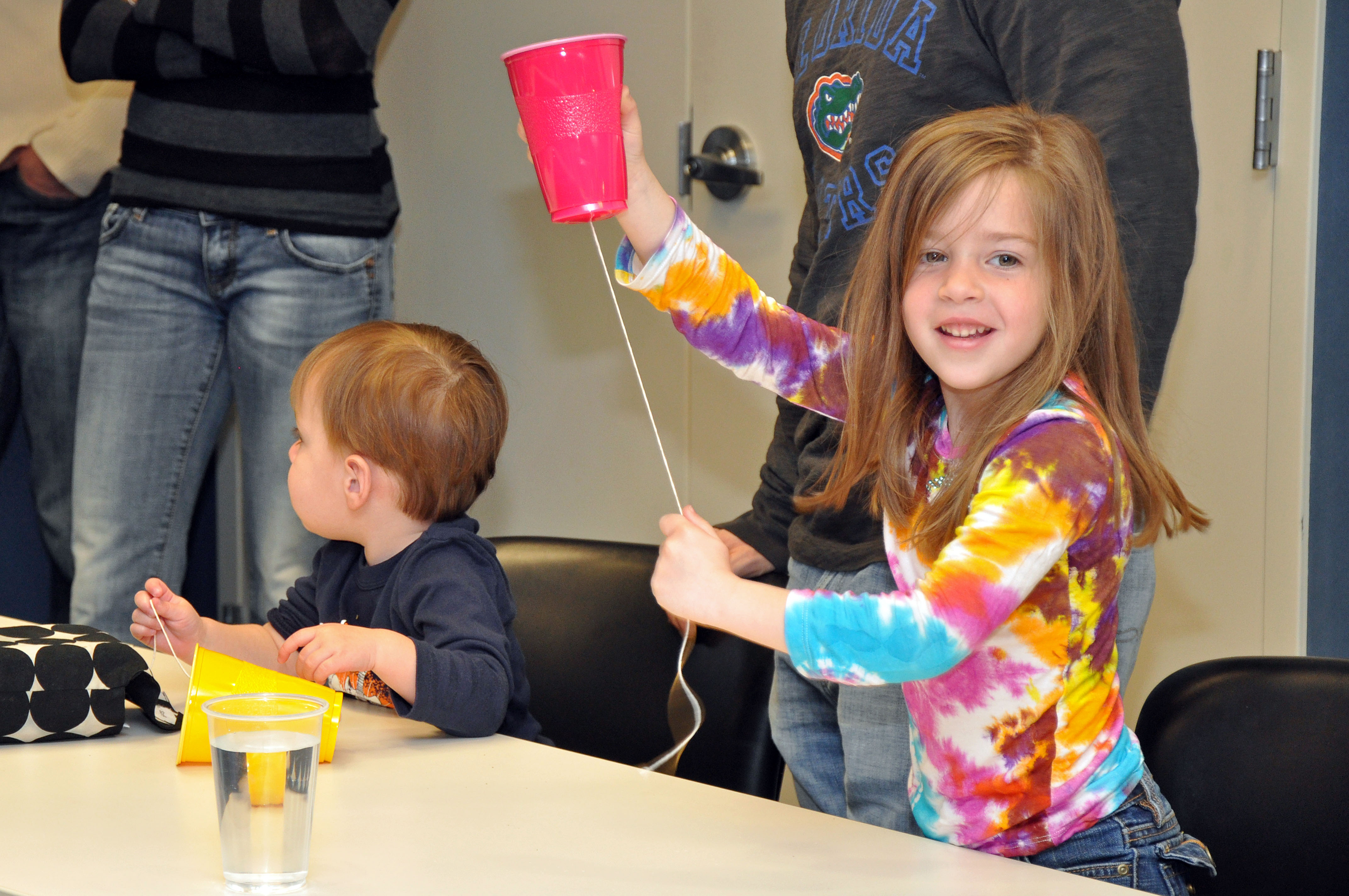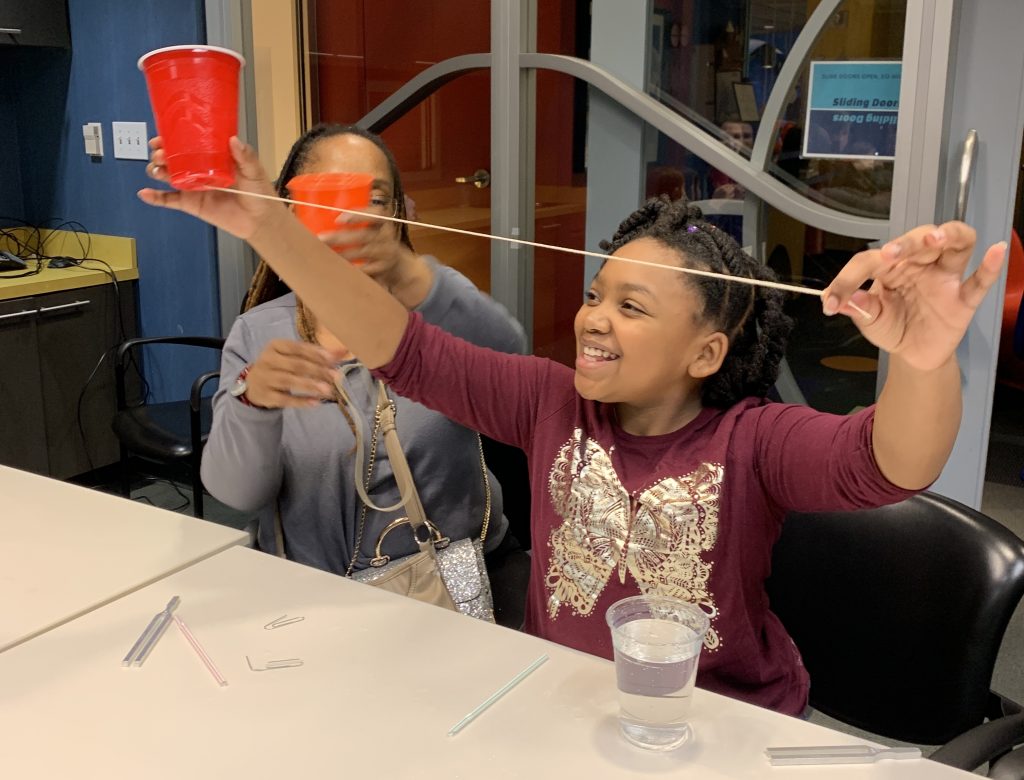
05 Mar Mardi Gras Science: The Cuica
It’s Mardi Gras! Time for parades, costumes, beads, and music! Of course, it’s also a a great opportunity to do some science.
In this activity, you will learn a bit about the science of sound by building a musical creation modeled on a Carnival instrument, the Brazilian Cuica (prounounced “kwee-kah”)!
Here’s What You Need
- Plastic drinking cup
- Nail
- Cotton twine
- Paper clip
- Scissors
- Cup of Water
Here’s What You Do
Use your scissors to cut a piece of string about 40 cm long. Grab your cup and carefully punch a small hole in the center of the bottom with the nail (you may need to ask an adult for help). Turn the cup upside down and push the the string through the hole in the bottom of the cup. Grab the string on the inside of the cup and tie a knot at the end of it. You can also tie the paperclip to the end of the string to keep it from sliding back through the hole. The string should now be hanging freely (and securely) from the bottom of the cup.
Now, let’s make some noise! Hold the cup firmly in one hand. Hold the string between the thumb and forefinger of the other hand. Now, run your fingers down the string. You should here a faint sound. That sounds pretty good, but we can do better! Dip the string in the cup of water, so that it absorbs some of the water. Now, run your fingers down the string again. It should sound a bit different. Experiment with the instrument. What happens if you move your fingers quickly down the string? Slowly? Short quick pulls? What if you used a different kind of string? Does the size of the cup matter?

Exploring sound with the Cuica
The Science Behind The Sound
The cup and string contraption creates sound in the same way that the Brazilian cuica does. Like many other instruments, the cuica was brought to Brazil from Africa. It was made from a hollowed-out log with an animal skin stretched over one end and a rope attached to the center of the skin. The Brazilian cuica is made from a metal cylinder with a skin stretched over one end. Fixed at the center of the skin is a stick, usually made from bamboo. To play the instrument, the musician slides a wet leather or cloth up and down the bamboo stick.
In order to understand how the cuica works, you have to understand a bit about sound. Sound is vibration that travels. If you can get something to vibrate fast enough you can create sound. The vibrations push and pull the surrounding air, causing the air to vibrate. The vibrations travel through the air and other materials and into your ear where they cause a thin membrane – you ear drum – to vibrate. You ear and brain can translate these vibrations into sound. In other words, sound is all about vibration!
As your fingers travel down the wet string, they stick and slide…stick and slide…stick and slide very quickly. This motion causes a vibration on the string. Stringed instruments like the violin also create sounds by using stick and slide. As a violinist slides the bow across the string, it sticks and slide causing the string to vibrate and create sound.
Of course, the vibrating sting can’t create a very loud sound. In order to make it louder or amplify the sound, we need a hollow space filled with air. The cuica uses a metal cylinder. In your string and cup contraption, the cup is used to amplify the sound from the string.
Fast Fact
In Africa, the cuica was used as a hunting tool. In the hands of a experienced user, it can be used to make sounds that sound like the howling of a female lion during mating season. Hunters would use it to attract male lions.

